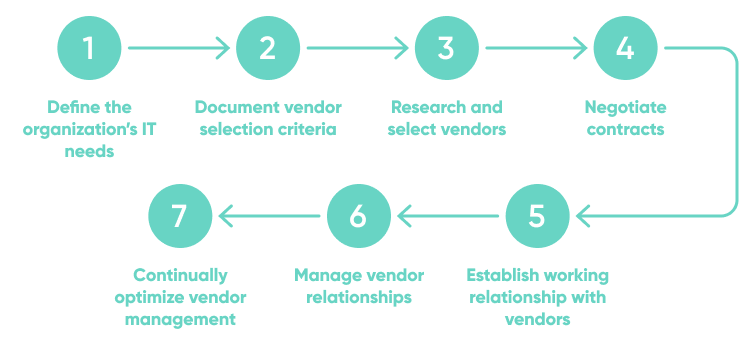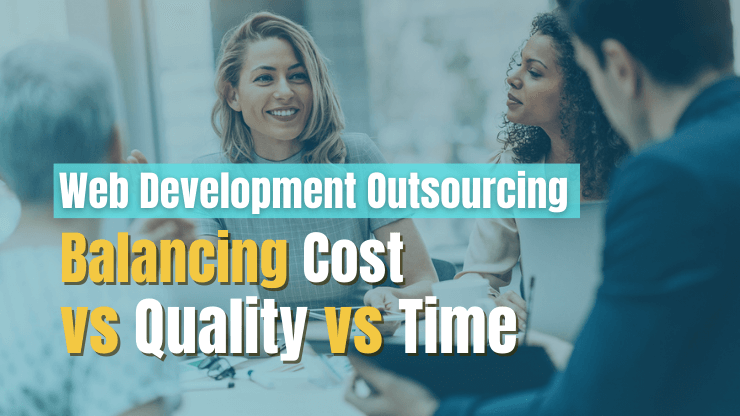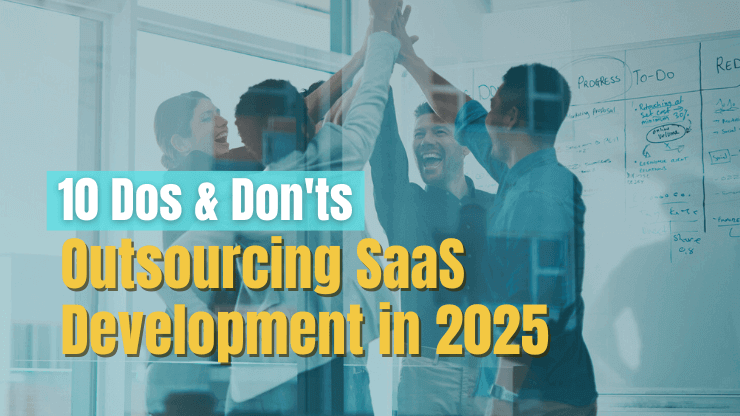92% of Forbes Global 2000 companies utilize IT outsourcing, but few have a strategic IT vendor management strategy. You might be partnering with IT vendors to bolster your in-house staff, modernize your IT services, or manage your IT help-desk services.
Regardless, you’re leaving value on the table without a strategic IT vendor management process in play. Make use of our essential 7-step process to start:
- Lowering IT project risks
- Saving outsourcing dollars
- Reducing vendor churn
- Streamlining your IT operations
Let’s get right into it!
What is IT vendor management?
IT vendor management is the process of overseeing and coordinating the work of external IT service providers. This includes setting expectations, defining roles and responsibilities, monitoring performance, and managing contracts.
The goal of IT vendor management is to ensure that service providers meet or exceed the expectations set by the organization, and to do so in a cost-effective manner.

Underneath the umbrella of “IT vendor management,” you’ll find many strategic processes such as:
- Vendor selection: Selecting third party vendors that help to achieve business goals.
- Performance management: Assessing supplier performance against a set of key performance indicators and setting expectations for performance improvement as necessary.
- Contract management: Negotiating contract terms that work for both the organization and the vendors.
- Relationship management: Establishing and managing vendor relationships through strong communication and collaboration.
4 key benefits of an effective IT vendor management process
Any procurement team knows that managing vendor relationships is challenging. It’s not a “one and down” thing. It’s an ongoing process of maintaining the vendor management lifecycle, as new vendors are constantly needed and some vendors are rolled off the roster.
However, an effective IT vendor management strategy can reap significant rewards for an organization. Let’s look at the top four benefits we see:
Lower project risk
There is inherent risk in working with third party vendors. You may find yourself more exposed to security breaches or more reliant than you would like on a single vendor with competing priorities.
Reduce this risk by putting into place strong vendor management practices:
- Protect confidential company and customer data by implementing consistent data-protection policies across all vendor engagements.
- Establish emergency plans to reduce the risk of supply chain disruptions or delivery failure.
- Assess deliverables against project objectives early and often to reduce the risk of failed or delayed delivery late in the project.
Saves you money
With ever-increasing budget pressures, all IT organizations are looking for ways to reduce costs. The good news is that when a vendor relationship is managed well, it can actually significantly reduce bottom line costs by:
- Guaranteeing the organization is getting the best value for its IT dollar by negotiating favorable terms with vendors and monitoring the performance of all vendors.
- Avoiding or resolving disputes with vendors, thus avoiding the need for costly litigation.
- Ensuring the organization is using its IT resources in the most efficient and effective manner possible through strategic research and use of an industry-standard vendor management system.
Reduce vendor churn
Vendor churn, or the rate at which companies discontinue their relationships with IT vendors, can be a major problem for businesses. IT vendor management can help to reduce vendor churn by:
- Improving communication and collaboration between businesses and vendors
- Developing clear and concise contracts that outline expectations and deliverables
- Hosting regular reviews of a vendor’s performance to identify potential problems early on, before they result in the discontinuation of the relationship
Streamline internal operations
An effective IT vendor management process can help to streamline internal operations and improve the quality and value of the services received by the vendors.
- Use vendor management systems or software to provide visibility of a vendor’s performance and KPIs to all stakeholders
- Establish a consistency of expectations and requirements across all vendors
- Maintain an open door policy within the vendor management office to encourage feedback and suggestions related to operational efficiency.
IT vendor management process best practices
We’ve looked at some of the top benefits of an effective vendor management strategy. Now we’re going to walk through how your organization can implement some top IT vendor management best practices and start to reap these benefits!
Clearly define the project scope of work
Whether you’re already working with a set of IT vendors or looking to establish a new vendor relationship, you probably have a rough idea of the work you need done. But, a successful vendor management process involves taking a much deeper look at the scope of work you’re asking of your vendors.
Typically, we think about working in this order:

However, many organizations find themselves in long-standing relationships with vendors and the job is more about working within a vendor’s capabilities. In that case, it looks something like this:

EIther way, this first involves an honest look at what an IT vendor can and cannot achieve. After you have a clear understanding, you should write up a scope of work document to include:
- Work to be performed
- Timeline for the work to be completed
- Exact deliverables
Collaboratively define roles & responsibilities
If you go in swinging with a long list of demands from your vendor, you’re likely to put off the vendor before you even start. On the flip side, if you collaboratively define roles and responsibilities with a vendor, you can set yourself up for early buy-in.
A few tips:
- Draft a document that outlines your proposed roles & responsibilities and ask the vendor for input either over email or (better yet) during a live video call.
- Assign individual owners to tasks or deliverables rather than a group, team, or organization.
- Communicate roles and responsibilities to all parties involved, including at least one level of management. This will ensure that everyone is on the same page and knows what is expected of them.
- Establish a process for amending roles and responsibilities during the course of the project.
Conduct vendor performance reviews
IT vendor performance reviews should be conducted at least annually, and more frequently if there are concerns about performance. Sometimes vendor management software will auto-trigger performance reviews. This can be helpful, but it’s important that you have a real vendor sourcing manager interacting with vendors person-to-person during the review process as well.
Goals of a an IT vendor performance review include:
- Assess deliverables against project objectives.
- Determine if cost savings is possible through additional contract negotiations.
- Collaborate with vendors to resolve missed deadlines or poor performance.
- Identify areas where the vendor is not in compliance with contract details such as KPIs or SLAs.
- Benchmark the vendor’s performance against other past or current vendors.

Think long-term to mitigate risks
When it comes to working with IT vendors, it’s important to think long-term..By taking a long-term perspective and being mindful of potential risks, you can set yourself up for success when working with IT vendors. Here are a few things to keep in mind:
- Understand your organization’s long-term IT strategy. Onboarding a new vendor to resolve a very short term issue may not be wise. Instead, focus on partnering with IT vendors that support your long-term needs.
- Assess your IT staffing strategy. Will you be hiring full time IT staff to fill the gaps that some vendors are currently filling? Will there be new gaps left due to retirements or layoffs?
- Prepare to weather storms together. Some disagreements or conflicts will arise when you have long-term IT partnerships. Work together to collaboratively resolve issues rather than burning bridges.
Maintain open communication
When working with IT vendors, it is important to maintain open communication in order to ensure that everyone is on the same page and working towards the same goal. Here are a few tips on how to do so:
- Have regular meetings: This will help to ensure that everyone is up-to-date on what is going on and can voice any concerns or ideas they may have.
- Be clear and concise: When communicating with vendors, make sure to be clear and concise in your requests or instructions. This will help to avoid any confusion or miscommunication.
- Be responsive: Be sure to respond to vendor inquiries or requests in a timely manner. This will show that you are invested in the project and will help to keep things moving forward.
- Be flexible: Be open to changes or suggestions that vendors may have. They likely have a lot of experience and can offer valuable insights that you may not have considered.
IT vendor management - 7 step process
Managing IT vendors may fall to an engineering manager, IT lead, or CTO. But, regardless, your organization’s procurement team will also likely be involved. A procurement team can help with vendor management by first and foremost providing a general procurement framework such as:

Your own organization may follow these steps or you may have your own specific process or requirements. Before undertaking IT vendor management, you should be clear on what overall process you will be following.
After you have that in mind, you’re ready to begin the 7-step process for IT vendor management:
Define the organization’s IT needs
The first step on your journey to successful IT vendor management should be to identify what your company’s specific needs are in regards to IT. This can be done by conducting a needs assessment which will help to paint a picture of what your company’s current IT infrastructure looks like and where improvements can be made.
To help you determine your organization’s IT needs, consider the following questions:
- Do we need short term or long-term support?
- What type of outsourcing model will work best?
- Are we interested in software team augmentation or end-to-end outsourcing?
- What is our budget?
- What type of expertise are we looking for?
- What are your timeline and implementation requirements?
Once you have a good understanding of your company’s IT needs, you can then start to engage with IT vendors who can provide the products, services, and support that you need. Be sure to ask lots of questions and get multiple quotes before making any decisions.
Document vendor selection criteria & bid document
Utilize the needs defined above as well as your overall vendor strategy to draft selection criteria for your IT vendors. Lean towards favoring vendors that support your long term business needs rather than vendors that fulfill short-term project requirements.
Selection criteria could include:
- The vendor's ability to provide a comprehensive solution that meets all of the organization's IT needs
- The vendor's reputation and track record in the industry
- The vendor's financial stability and health
- The vendor's customer satisfaction levels
- The vendor's pricing and terms
- The vendor's technical support and service levels
- The vendor's flexibility and willingness to customize their solution to meet the organization's specific needs
- The vendor's location and proximity to the organization
- The vendor's ability to scale their solution to meet the organization's future needs
Once you have drafted your selection criteria, write up a bid document that includes business requirements and questions you need answered from vendors.
Research and select vendors
When researching IT vendors, it's important to first start by casting a wide net. You can find IT vendors by:
- Using your own network. Ask colleagues and friends for suggestions or search through your LinkedIn connections for ideas.
- Searching online. It sounds basic, but sometimes a simple Google search will help you find vendors that meet your needs.
- Looking through forums and vendor listings sites. Clutch.co is a reliable source to find reviews of top IT vendors.
Once you’ve found a few vendors that meet your selection criteria, you should contact them and begin a more formal evaluation period before you make your selection. Typically this involves sharing your bid document and requesting a formal bid from them for the project at hand.
Negotiate contracts
After you have selected a vendor you would like to move forward with, it’s time to negotiate your contract. When negotiating contracts with IT vendors, it is important to keep a few key points in mind:
- Make sure that you understand the vendor's business model and how they make money. This will help you understand their motivations and what they are looking for in a contract.
- Be clear about your needs and objectives for the project. This will help you define what you are willing to compromise on and what your bottom line is.
- Do your homework and research the market rates for the services you are requesting. This will help you know if the vendor's proposal is in line with industry norms.
- Have a clear understanding of the legal terms and conditions associated with the contract. This will help you protect your interests and avoid any surprises down the road.
- Be prepared to walk away from the negotiating table if the vendor is not willing to meet your needs. This will show them that you are serious about getting a fair deal.
Overall, embrace a collaborative mindset. Instead of going in swinging with strict terms and conditions that only satisfy your interests, consider finding middle ground that is mutually beneficial.
Establish working relationship with vendors
Once you have signed on the dotted line, you need to establish a working relationship with your new vendor. This should be the fun part, where you get into the meat of the project! Here are a few tips to help you start with good vendor management practices:
- Request onboarding information as required such as: tax forms, licenses, and insurance details.
- Assign a vendor manager who will keep the paperwork in order, answer general vendor questions, and ensure the vendor is paid on time.
- Notify all parties internally of the vendor and how the contract will affect them.
This is also where you should lean into the formal procurement process your company has. Utilize the procurement team to help you establish appropriate processes with your new vendors.
Manage vendor relationships
IT vendor management doesn’t end when you sign a contract. In fact - that’s really when it begins. Throughout your working relationship with a vendor, you should be looking for ways to improve the relationship and ensure it is meeting your business goals. Here are a few tips to manage your vendor relationships effectively:
- Get to know your vendors. Understand the chain of command, and who will be boots on the ground doing the work for you.
- Maintain open communication. Check in with your vendors and proactively ask for feedback along the way. This will help to encore your vendors to come to you when things aren’t going so well.
- Be fair and reasonable. To keep your vendors happy, you need to consider their needs, and quickly respond to any concerns they have.
By building strong relationships with your vendors, you will be more likely to keep service delivery on track and ensure they stick around for the long run.
Continually optimize vendor management
There will always be room for improvement, whether that’s by way of speeding up delivery of services or opening up communication to be more collaborative. Here are a few tips to optimize your vendor management process:
- Regularly review your vendor management process and make formal changes where needed. Resist the urge to simply work outside of the documented process. You will thank yourself later.
- Communicate regularly with your IT vendors to ensure that they are meeting your expectations. Open up communication through regular meetings and casual emails or chat messages.
- Conduct regular performance reviews of your IT vendors. Lean on your procurement team to help facilitate a formal review process.
- Make use of vendor management software to help automate and streamline the process.
Conclusion
Working with third-party IT vendors can be a fast-track to sustainable business growth. However, you need a strategic IT vendor management strategy to get the best value out of your investment. To help you get started, we went over our essential 7-step vendor management process that you can put into practice today:
- Define the organization’s IT needs
- Document vendor selection criteria & bid document
- Research and select vendors
- Negotiate contracts
- Establish working relationship with vendors
- Manage vendor relationships
- Continually optimize vendor management
Have questions about how to outsource IT services and start freeing up your internal staff for more strategic initiatives? Don’t hesitate to reach out to us!







